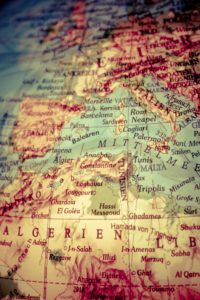Generally, patent rights are specific to the territory in which the patent issued, i.e., an issued U.S. Patent cannot be enforced outside the United States. A U.S. Patent gives its owner the right to prevent others from making, using, or selling the invention in the United States or importing the invention into the United States.
U.S. Applicants that want to protect their inventions outside the United States can file a patent application under the Paris Convention Treaty (PCT), but there is no such thing as an international patent. The PCT is a treaty that has been signed by over 100 countries that makes it easier for an applicant to file patent applications claiming the same invention in multiple countries. The PCT provides the means for an Applicant to perfect a “priority date,” or date of first filing, in one country and to rely on that date when filing applications for the same invention in other countries that have also signed the same treaty. This priority date can be relied on for up to 30 months (31 months in some countries) giving the applicant two and a half years to make decisions as to where they want to pursue patent protection. However, the PCT application is more like a U.S. provisional application than a non-provisional application. PCT applications allow for the filing of other applications in member countries, but do not issue into patents themselves.
invention in other countries that have also signed the same treaty. This priority date can be relied on for up to 30 months (31 months in some countries) giving the applicant two and a half years to make decisions as to where they want to pursue patent protection. However, the PCT application is more like a U.S. provisional application than a non-provisional application. PCT applications allow for the filing of other applications in member countries, but do not issue into patents themselves.
The international PCT application must be filed within 12 months of the first application directed to the same subject matter, i.e., the earliest application in your chain of applications. While PCT applications do not issue into patents, they do get examined by the office that the applicant selects to perform the search and examination. The required fees depend on which office actually performs the searching for you and on which of the fee schedules you can use. As a U.S. citizen, there are over half a dozen different patent offices around the world that an applicant can select to examine their PCT applications and each office charges a different amount for their work.
The various patent offices that a U.S. Applicant can choose to complete the search and examination vary in cost, speed and quality of work. At one end of the spectrum, the European Union’s Patent Office charges the highest fees of any office available to U.S. citizens. On the other hand, other patent offices afford a lot of deference to the European Patent Office’s work. The Russian Patent office charges the lowest fees and is known for being one of the fastest offices. Speed can be an issue if the PCT application is being used to perform a prior art search.
After filing, the PCT application will be examined and a report will be issued. The applicant can either respond to the report by amending the application or they can choose not to respond at all. By the end of 30 months from the priority date, the applicant will need to have made arrangements to file patent applications in the regional offices in which they want protection. These applications are referred to as national stage applications. Additional costs will of course be incurred for those filings.
Filing a PCT application is quite a bit more complicated than filing a standard non-provisional patent application in the U.S. Consult an experienced professional to discuss your individual needs.